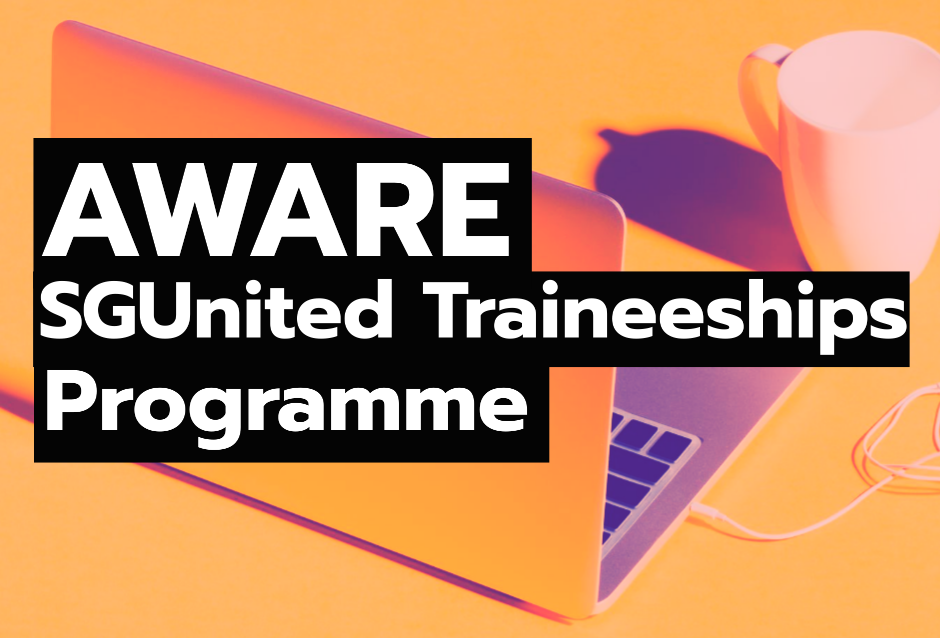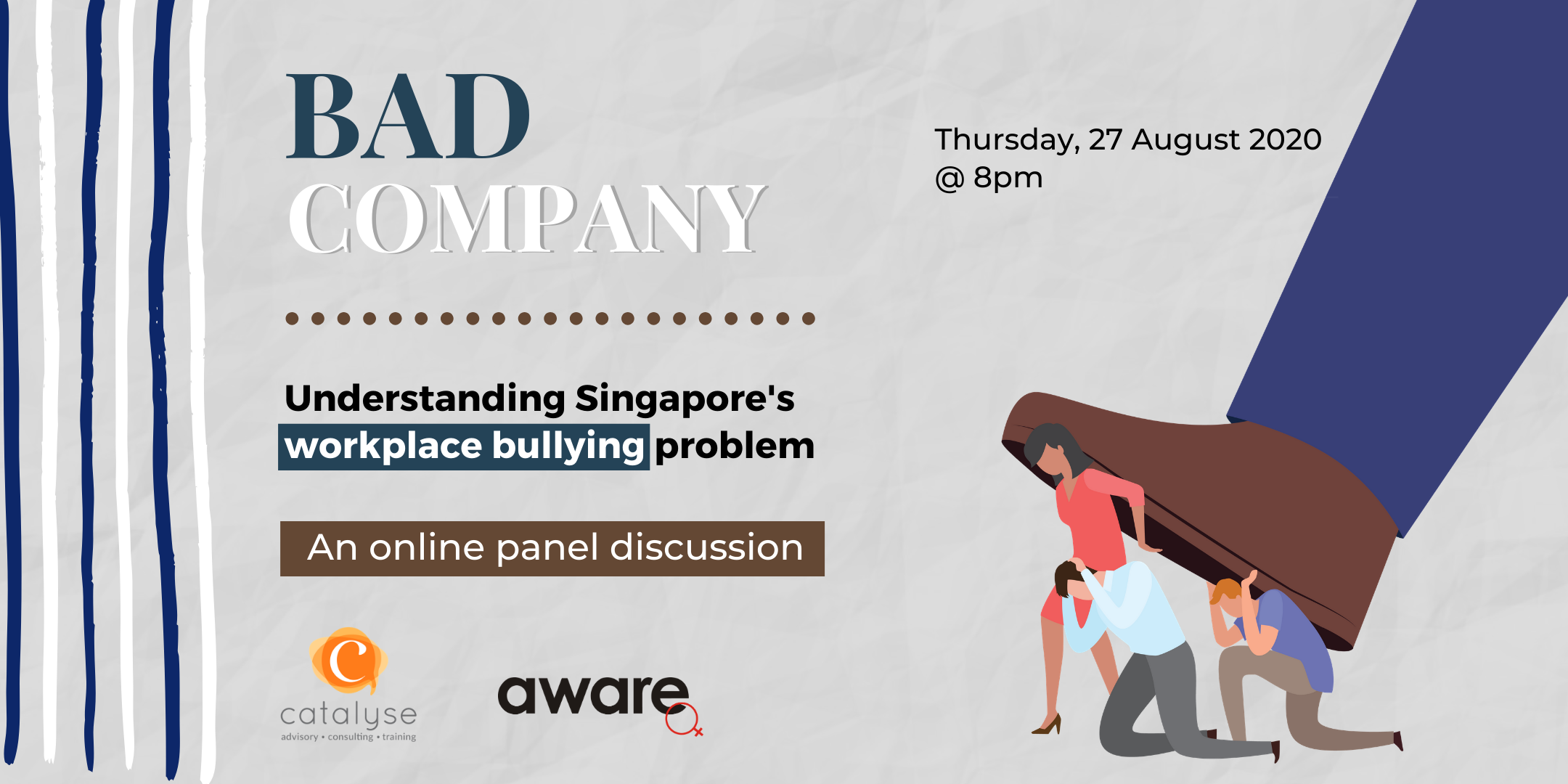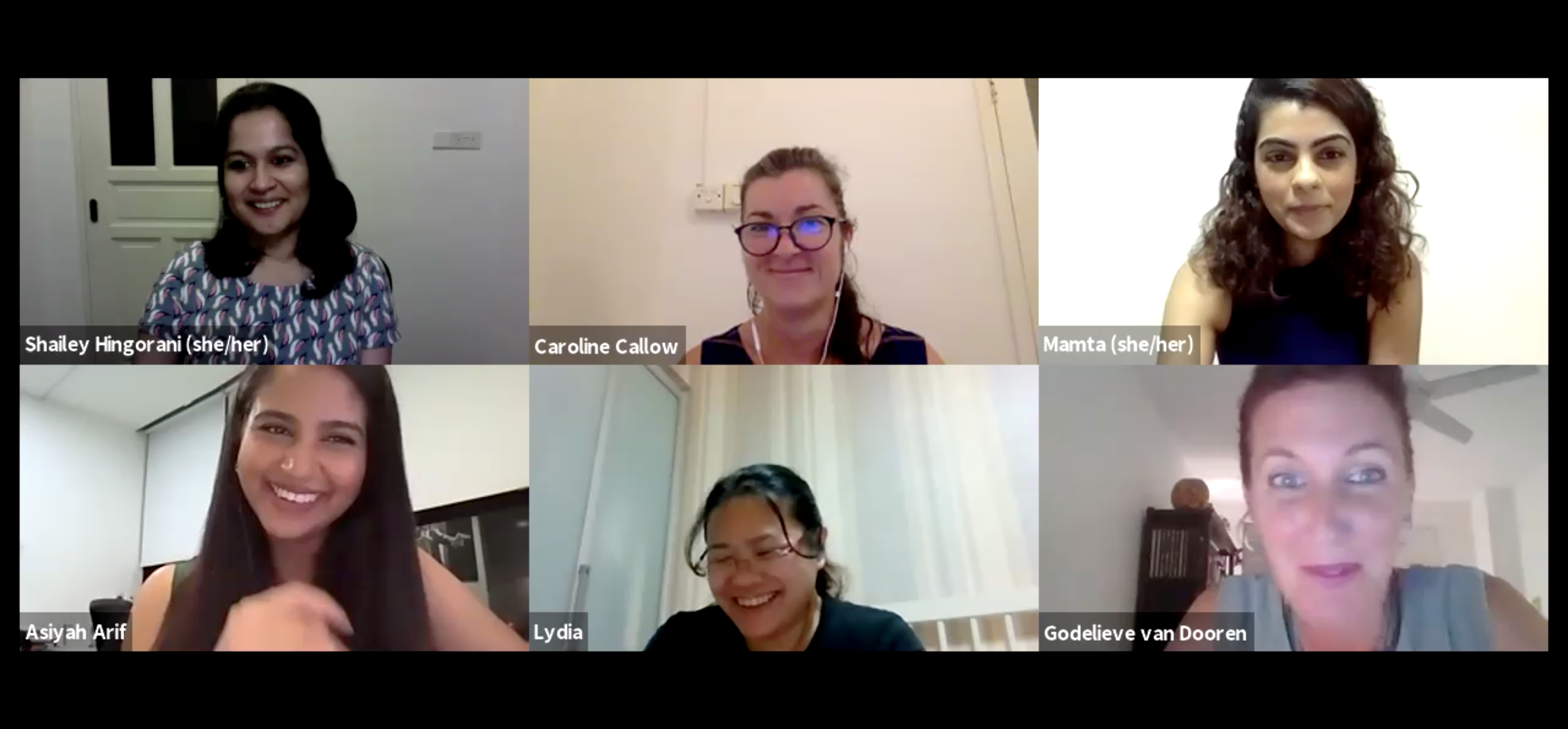This commentary was originally published on Channel NewsAsia on 23 September 2020.
SINGAPORE: Women’s rights advocates woke up to a pleasant surprise on Sunday (Sep 20) morning when the Government announced Singapore’s first-ever review of women’s issues, with a view to identifying and tackling gender inequality.
Besides the announcement itself, the way the review was framed is extraordinary. Instead of focusing on short-term concerns, the review will look at “underlying, structural issues”, to ensure that gender equality becomes a fundamental value.
For a society where that principle is, unfortunately, not enshrined in its Constitution, this shift is all the more laudable.
For far too long, we have foregrounded individual examples of the discrimination, exploitation, harassment and objectification that women confront in numerous arenas. We focus on each week’s carousel of stories on over 400 illicit videos taken by an undergraduate, sexual harassment in a Grab ride or alleged mile-high molest – and then move on.
We’re not seeing the bigger picture.
Gender inequality forms the bedrock of women’s experiences of life. It starts from the personal, from the time a person is born. It is reinforced by culture, policies, laws and institutions as she moves through the world.
We cannot achieve any societal objectives relating to the challenges facing women – whether in suffering violence, managing reproduction, working or supporting families – without this systemic understanding, this feminist lens.
At AWARE, where we have been advocating for women’s rights for 35 years, we are optimistic this review will be a turning point in our country’s journey to equality.
We would suggest a sharper focus be placed on three key areas: The uneven share of care responsibilities, gender-based discrimination and harassment at work, and the sexual objectification of women.
THE UNEVEN SHARE OF CARE WORK
Caregiving and housework are everyday tasks that maintain life, both daily and generationally.
These include caring directly for oneself and others, including children and the elderly. It also includes maintaining physical spaces and organising resources as part of the indirect process of care – for example, the tasks of cleaning, cooking and shopping.
All this is mostly unpaid, underappreciated work women have traditionally performed for their families and communities. This traditional expectation is rooted in an antiquated idea that certain traits, such as being nurturing and caring, are somehow innate to women – a persistent myth despite plenty of research overturning its biological basis.
The International Labour Organisation estimates that in Asia Pacific, women spend 4.1 times more time on unpaid caregiving and housework than men.
While no similar time-related data is available for Singapore, other indicators help paint a picture of the nature and effects of caregiving and housework on women.
According to Singapore’s Labour Force Survey 2019, of women outside the labour force, 43 per cent are not working because of caregiving and housework responsibilities.
By contrast, only 0.04 per cent of men are outside the labour force because of caregiving and housework. We also know that women spend a median of nine years outside the labour force providing eldercare.
Caregiving isn’t just exhausting, time-consuming work. It also robs women of their professional incomes without compensating them for their labour.
In order to mitigate the heavy burden of caregiving and housework, many households hire migrant domestic workers. Yet these workers (almost all women) also face their own set of challenges, such as long hours and poor compensation.
The review should take concrete steps to recommend what a gender-equal Singapore would look like for them, as well.
GENDER-BASED DISCRIMINATION AND HARASSMENT AT WORK
Between September 2019 and September 2020, AWARE’s Workplace Harassment and Discrimination Advisory received 172 calls, with over 30 per cent concerning some form of discrimination.
Of these, about 80 per cent concerned discrimination against women with maternity and caregiving responsibilities. These women lost job opportunities, were denied promotions and reasonable accommodations, and faced mistrust and suspicion because of their caregiving duties.
The same traditional ideas that push women to take on the lion’s share of caregiving at home seem to also make them less “reliable” to employers.
This discrimination has serious consequences. Women in Singapore are on average paid 6 per cent less than men for performing the same kind of work. They are also concentrated in low-paying jobs, if they do work instead of providing caregiving fulltime.
Their need to take breaks from the workforce renders them unable to progress as far and as quickly in their careers as men.
Finally, they put less aside for retirement – women on average have 11 per cent less than men in their CPF accounts.
Although the Government has taken steps in the past few years to educate and incentivise employers to act fairly, such as through the promotion of flexible work arrangements, in the absence of legislation that clearly lays out employer duties and responsibilities, many get away with little more than superficial commitments to minimise work-life conflict.
Women are also harassed at work – which the US federal court has interpreted as a form of gender-based discrimination. The last workplace sexual harassment survey in Singapore of 500 respondents conducted by AWARE in 2008 found that over 50 per cent had experienced some form of sexual harassment at work.
More recent surveys, like YouGov’s omnibus research in 2019, suggest that figure remains high, with at least a quarter of women here reporting experiencing some form of sexual harassment.
While the law on sexual assault is clear, the Government has adopted a light touch on workplace harassment, choosing to issue a Tripartite Advisory on Managing Workplace Harassment, rather than specific legislation on workplace harassment.
It is possible for victims of workplace harassment to seek remedies against the harassers under the Prevention from Harassment Act (POHA). However, POHA neither informs the employer of protective and preventative measures it must comply with, nor informs workers of remedies available to them against the employer.
Similarly, the Advisory encourages employers to have workplace harassment and grievance handling policies in place, but it doesn’t hold them legally liable for harassment acts of employees carried out in the course of their employment or for negligence in dealing with complaints of harassment.
Countries such as Australia have introduced the Fair Work Act, which enshrines the principle of workplace equality and sanctions employers for discriminatory practices in law.
Our Government should consider turning Singapore’s Fair Consideration Framework into a Workplace Equality Act, to send a strong signal to employers by laying out their legal liabilities. The Framework currently does not have the weight of law enforcement behind it.
This Act could include reasonable accommodations that employers should be obligated to make for caregivers – including providing them with the right to request flexible work arrangements to balance work and caregiving responsibilities.
Surely Singapore is now on stronger footing to take this bolder step, after more companies have seen firsthand how remote working does not compromise productivity since offices migrated into homes this coronavirus pandemic.
Finally, the Act could also include sections on workplace harassment, to ensure that employers have in place pertinent policies, training and grievance and disciplinary mechanisms.
SEXUAL OBJECTIFICATION OF WOMEN
Problematic attitudes that reduce women to objects – tools for the sexual pleasure of others – within Singapore society can be found across all demographics and age groups.
The devaluation of women based on appearance can be damaging. Sexualised portrayals in the media affect girls and women in tangible ways: Many develop eating disorders, self-esteem issues, depression, deep anxiety about their appearances, and feelings of shame.
Of course, sexual objectification is harmful to boys and men, too. It ties their success and attractiveness to dominance, power and aggression, and erodes their own humanity and empathy.
Underreporting of sexual violence is a huge problem, with over seven in 10 clients of AWARE’s Sexual Assault Care Centre (SACC) not making formal reports. If we are conditioned to see women as sexual tools, no wonder women are reluctant to come forward and seek help after sexual assault.
These survivors assume their complaints will be dismissed or excused by bystanders and authorities alike. They have shared with SACC how their own families and friends reacted to their experiences with disbelief, judgment or victim-blaming comments, finding fault in the survivor’s actions as opposed to focusing on the perpetrator’s.
Comprehensive sexuality education that focuses heavily on consent will be essential in fighting sexual objectification and sexual violence in future generations of Singaporeans.
Programmes should be introduced in an age-appropriate manner in schools, and reinforced in colleges and workplaces. Parents should be equipped and encouraged to talk to their children about gender roles, healthy relationships and sexual consent.
Beyond these priorities, we also urge the Government to review past and present policies from an intersectional lens, to analyse their differential impact on not just men and women, but women with disabilities, ethnic minority women, migrant women and more.
Cementing gender equality as a fundamental value has been a long time coming. Let’s not squander the opportunity.
Shailey Hingorani, Head of Research and Advocacy, AWARE







